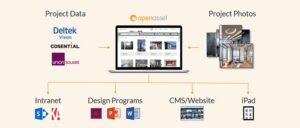How to Craft a Winning Response to an RFP
Sep 1, 2021

Responding to an RFP can feel like a time-consuming, cumbersome chore that stands between you and a potential new business win, but they are also a terrific opportunity to show your potential client why you’re the perfect fit for the business. In this blog, we’ll go over the steps you should follow to craft a winning response to and RFP.
RFP Response Tips and Tricks: Project Proposal Best Practices
This guide has everything you need to make the RFP response process easier, and more efficient. Here are six tips to help you craft a winning response to and RFP:
1. Identify The Client’s Needs
Before you begin writing your proposal, it’s important to take stock of all of the information you can glean from the RFP and your external research, such as:
- the client’s underlying concerns,
- key issues plaguing their business, and
- the goals that they wish to achieve.
This process will enable you to deliver a more custom response that speaks directly to their needs, and which is more likely to get a positive response.
2. Analyze The RFP Requirements and Determine Whether or Not You Can Meet Them
The next step is to look at the client’s requirements and make sure you’re able to deliver the expertise and service they need. If you feel like your company can’t deliver, it might be best to decline the opportunity and turn your time and attention to other architecture RFPs.
If it looks like a good fit, then create a list of the essential requirements and make sure that they are at the core of your response.
3. Assemble a Powerhouse Team
Responding to an RFP can be a labor-intensive task, made more complicated by the pressure of a looming deadline. Rather than tackle it alone, it’s best to gather a team of people from across your business. Working together will make the job easier and more efficient, and likely yield better results.
Depending on your industry, your team could include representatives from these areas:
- Sales and account management
- Marketing
- Technology
- Senior management
- Procurement
- Legal
4. Create a powerful proposal
Once your team is in place and prepped, get to work creating a response that consists of several essential components. Together they create a compelling argument for selecting your company over the competition. Be sure to include:
- A cover letter
- An executive summary
- A response to the main proposal request
- Case studies, and
- Pricing.
Here are a few tips to make the most of each piece:
Cover letter
Your cover letter should introduce your business and demonstrate that you understand the client’s business. Show them why you’re the right choice.
Executive summary
Your executive summary is where you deliver a concise overview of your offering. It’s your opportunity to convince key decision-makers that your proposal is the best option. Avoid making it a pure sales pitch by remembering that you are looking to offer the client a solution, not just selling a product.
Use the executive summary to:
- State their objectives as you see them (“you listen”)
- Show that you understand their objectives (“you empathize”)
- Display your expertise and how you can help (“you can deliver”)
Proposal
A proposal is a place for you to demonstrate your expertise, so don’t distract the reader from your message with pricing. Save pricing info for a separate section at the end.
Case studies
Look at your previous and current clients and find a few that share similar challenges as your prospective client. Showcase how your business helped them solve those challenges and improve their overall business.
Final checklist
You’re not finished yet. Once you’ve drafted the proposal, read through it, make sure your answers are clear and concise and double-check spelling and grammar.
If you’re repurposing an old proposal, check the document properties to make sure no other client names or sensitive information is mistakenly used. Finally, look at your response objectively and think, “Does this address their needs?” and “Would this proposal convince me if I were the customer?” Does your response:
- Comply with most of their requirements?
- Empathize with their needs?
- Offer a compelling story as to why they should choose you over the competition?
5. Brand Your Response
Never underestimate the power of visual appeal. Make sure your proposal looks professional and accurately represents your brand and its attributes. Include your logo and make it easy for the client to learn more about your company by providing contact information, website address and social media links.
If you’re required to provide a hardcopy of the RFP response, consider printing it on higher quality paper, for example, at least 100 g/m2 weight with a matte or satin finish. It’ll look sharp and stand out from the others in the pile!
6. Leverage Technology to Streamline The Process
No doubt, responding to an RFP is a lot of work. It can be overwhelming—from start to finish—and winning new business depends on the overall quality of the end product.
Fortunately, there’s technology that can help make the process easier. Consider investing in a digital asset management solution to help leverage your digital assets more efficiently. It’ll save you time and stress and help create a more impactful proposal.
Craft Wining RFP Responses With OpenAsset
Feeling better about creating a standout proposal? You’ve got this.
However, now that you’re ready to craft a winning response to an RFP, it’s time to implement the necessary tools to help you along the way. One of those tools is digital asset management (DAM) software.
Unlike traditional DAM systems, OpenAsset is a project-based digital asset management solution specifically designed for AEC marketers and proposal writers. With dozens of integrations and useful features, OpenAsset is the martech you need to create high-converting content, proposals, presentations and much, much more. Contact OpenAsset today to get started.





